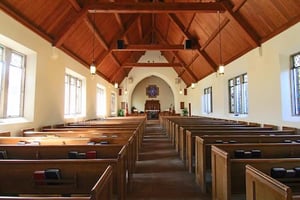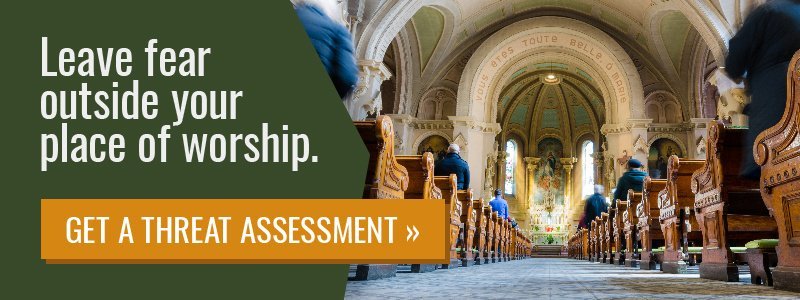 A place of worship is meant to be a peaceful place where people can walk through the door feeling welcome, safe, and secure. However, events like the Charleston, SC church shooting in 2015 have shaken church goers and ministry leaders, challenging them to evaluate their level of security at their places of worship.
A place of worship is meant to be a peaceful place where people can walk through the door feeling welcome, safe, and secure. However, events like the Charleston, SC church shooting in 2015 have shaken church goers and ministry leaders, challenging them to evaluate their level of security at their places of worship.
Countless active shooter incidents since then have reminded us that acts of violence are neither predictable nor rare, and no place — not even religious establishments — are immune to tragedy.
This is why safety planning is vital. With effective safety planning, your place of worship can proactively address safety concerns and be prepared to effectively act in a crisis. Here's how to get started with your church's safety plan:
Be open with the congregation
If there's one thing history has taught us when it comes to active shooter situations, it's that not having a plan can be detrimental. Ministry leaders should inform their congregations of safety precautions that are currently in place and well as safety protocol for emergency situations. Keep in mind, though, plans should be simple and flexible. Emergency situations are unpredictable and chaotic, and those involved must have the flexibility to make decisions based on unique circumstances while still following safety protocol.
Create a safety committee
Identify and train leaders within the congregation who are prepared to respond in emergencies. These safety committee members should be present whenever there is a service or event at your place of worship. Teach them to view their position on the committee as a ministry to the church and the safety of its members, not as a requirement to be combative or threatening.
Develop written policies on who is approved to carry
In South Carolina, licensed carriers are permitted to have a concealed weapon in a religious sanctuary as long as they are given permission by a church official. To avoid any legal complications, provide your safety committee members with written permission if you intend for them to carry.
However, don't assume that everyone on your safety committee must be armed. Carrying is just one way to address safety at your church or other place of worship.
Include your ministry team
Once you've appointed your safety committee, train them alongside your ministry team. There are two main reasons for training your ministry team. First, your church attendees are already accustomed to following the ministry team's lead. Therefore, in an emergency situation, this will be their instinct. If your ministry team is not trained to effectively respond, then the congregation will flounder when an immediate response matters most.
Another reason for involving your ministry team in safety and first response training is because ministry team members will likely be the first to notice a problem. For example, a pastor or worship leader standing on stage facing the congregation would be the first to see an attacker walk into the back of the sanctuary. Or, someone greeting church goers as they arrive may notice a suspicious person who appears to be concealing a weapon under baggy clothes. In these instances, the right response is vital.
Know the difference between a disturbance and an act of violence
A disturbance is not the same as an act of violence, and they should be treated differently. Disturbances can often be deescalated, while acts of violence require emergency response.
Implement scenario-based training
Your safety and ministry team members need more than a training packet complete with a list of do's and don'ts. They need scenario-based training that forces them to make decisions in order to strengthen and accelerate their critical thinking skills. Your training should also include instructions on how to effectively communicate with first responders when they arrive at the scene.
Require regular refresher training for safety team members
Just like passing out a pamphlet with safety protocol is ineffective, so is a one-time training workshop. In emergency situations, instinct is what takes over. Therefore, emergency response must be taught frequently and absorbed at a level that makes it an instinctual response for those being trained.
In addition to ongoing training, make a habit of meeting with and briefing your ministry and safety team prior to events.
Keep life-saving medical equipment on hand
Your place of worship should keep Bleeding Control Kits and an AED on hand so that you or someone in your congregation can treat life-threatening injuries until EMS arrives.
If you do not have a Bleeding Control Kit or you need training on how to use one, contact ProActive Response Group at (864) 479-8246. For more information about security training and a threat assessment for your place of worship, click on the banner below.
.png?width=499&height=133&name=Logo-menu%20(1).png)



